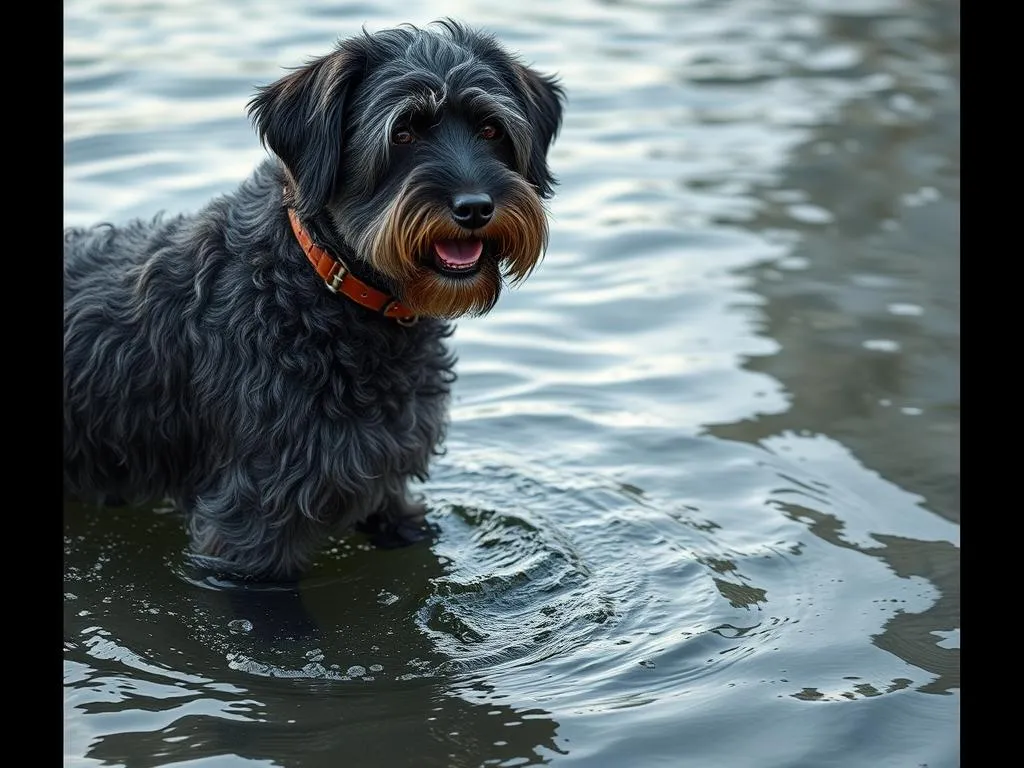
Understanding dog breeds is essential for anyone considering bringing a canine companion into their home. Each breed comes with its unique characteristics, which can significantly influence the dog’s size, temperament, and care needs. Among these breeds, the Portuguese Water Dog (PWD) stands out due to its distinctive appearance, energetic nature, and historical significance.
Understanding Dog Breeds
Dog breeds are specific groups of domestic dogs that have distinct characteristics and traits, which have been shaped over generations through selective breeding. Recognizing these characteristics is vital for potential dog owners as it helps ensure a harmonious relationship between the dog and its family.
When considering how big a dog will get, several factors come into play. Genetics plays a crucial role, but environmental factors, nutrition, and even health can influence a dog’s growth trajectory. Understanding these elements can provide insight into what size to expect from a particular breed.
Overview of the Portuguese Water Dog
History and Origin
The Portuguese Water Dog has a rich history dating back several centuries, primarily in the coastal regions of Portugal. These dogs were bred to assist fishermen by retrieving nets, herding fish, and even delivering messages between boats and shore. Their intelligence and versatility made them invaluable in Portuguese fishing communities.
Physical Characteristics
The PWD is known for its curly, water-resistant coat that can come in a variety of colors, including black, brown, and white. These dogs possess a muscular build, which complements their spirited nature. Their distinctive features include a broad head, expressive eyes, and webbed feet, which aid in swimming.
Size of Portuguese Water Dogs
Standard Size Expectations
So, how big will Portuguese Water Dogs get? On average, male PWDs typically stand 20 to 23 inches tall at the shoulder, weighing between 42 to 60 pounds. Females are slightly smaller, averaging 17 to 21 inches in height and weighing 35 to 50 pounds.
When compared to other dog breeds, the Portuguese Water Dog falls into the medium-size category. For instance, a Labrador Retriever is generally larger, while a Dachshund is considerably smaller.
Factors Influencing Size
Several factors can influence the size of a Portuguese Water Dog:
- Genetics and Lineage: The size of the parents can often predict the size of the offspring. Breeders typically select for size when establishing breeding lines.
- Nutrition and Health During Growth Stages: Providing a balanced diet and addressing health issues during puppyhood can help ensure that a PWD reaches its full size potential.
- Environmental Factors: Living conditions, exercise, and overall care can also impact a dog’s growth.
Growth Stages of Portuguese Water Dogs
Puppy Stage
The first year of a Portuguese Water Dog’s life is crucial for growth and development. During this stage, puppies experience rapid growth, particularly in the first six months. It’s essential to provide proper nutrition that supports healthy growth, including high-quality puppy food rich in essential nutrients.
Adolescent Stage
As PWDs transition into their adolescent stage, they may experience growth spurts that can lead to awkward physical changes and sometimes unpredictable behavior. During this time, managing their energy and providing consistent training is essential. Regular exercise can help maintain their physical health and mental well-being.
Adult Size
Most Portuguese Water Dogs reach their full size between 12 to 18 months of age. At this point, they will have developed their adult characteristics, including a well-defined musculature and their distinctive coat. It’s important to note that while they may stop growing in height, they may continue to fill out and gain muscle mass into their second year.
Care Considerations for Portuguese Water Dogs
Nutritional Needs
A balanced diet is critical for the healthy growth of Portuguese Water Dogs. During the puppy stage, they require food formulated specifically for growing dogs, which is higher in calories and nutrients than adult dog food. Once they transition into adulthood, a high-quality, protein-rich diet will help maintain their energy levels and overall health.
Exercise Requirements
Portuguese Water Dogs are energetic and require regular exercise to keep them happy and healthy. Ideally, they should get at least 60 minutes of exercise each day. Activities that are suitable for PWDs include swimming, fetch, and agility training, which can also serve to mentally stimulate them.
Grooming and Maintenance
The curly coat of a Portuguese Water Dog requires regular grooming to prevent matting and tangling. A grooming schedule should include brushing at least once a week and professional grooming every few months to maintain coat health. Bathing should be done as needed, especially after swimming.
Suitability of Portuguese Water Dogs for Families
Temperament
Portuguese Water Dogs are known for their friendly and intelligent demeanor. They are highly trainable and tend to be eager to please, making them great companions for families. Their playful nature and loyalty make them excellent family pets.
Interaction with Children and Other Pets
PWDs generally get along well with children and other pets, provided they are properly socialized from a young age. Teaching children how to interact with dogs respectfully can foster a strong bond. Additionally, early socialization with other animals can help PWDs develop positive behaviors.
Living Conditions
While Portuguese Water Dogs can adapt to various living situations, they thrive in environments where they have space to run and play. A home with a yard is ideal, but regular trips to the park or beach can also meet their exercise needs. They are not suited for sedentary lifestyles and require active owners who can engage them physically and mentally.
Conclusion
In summary, the Portuguese Water Dog is a fascinating breed with unique characteristics and care requirements. Knowing how big will Portuguese Water Dogs get is just one aspect of understanding their needs. These dogs require proper nutrition, regular exercise, and grooming to thrive, making them suitable companions for active families who can provide the necessary care.
Their friendly temperament, intelligence, and adaptability make them excellent family pets. However, potential owners should consider all aspects of dog ownership before bringing a PWD into their home.
FAQs
How big do Portuguese Water Dogs get?
On average, male Portuguese Water Dogs stand 20 to 23 inches tall and weigh 42 to 60 pounds, while females are slightly smaller, ranging from 17 to 21 inches in height and 35 to 50 pounds.
What is the typical lifespan of a Portuguese Water Dog?
The average lifespan of a Portuguese Water Dog is approximately 12 to 14 years, although with proper care and attention, some may live longer.
Are Portuguese Water Dogs good with children?
Yes, Portuguese Water Dogs are known for their friendly and playful nature, making them great companions for children. Early socialization is important to ensure positive interactions.
Do Portuguese Water Dogs shed?
Portuguese Water Dogs are considered low-shedding due to their curly coats, which trap loose hair. However, regular grooming is essential to maintain their coat and prevent matting.
How much exercise do Portuguese Water Dogs need?
Portuguese Water Dogs require at least 60 minutes of exercise daily. Activities like swimming, fetch, and agility training are excellent for keeping them physically and mentally stimulated.








